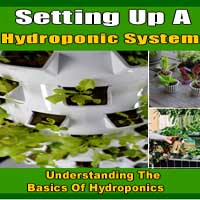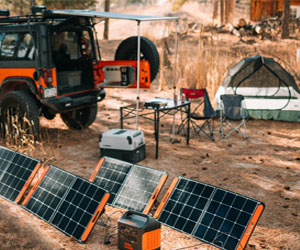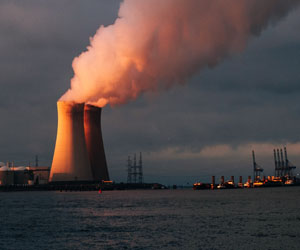


Embracing Simplicity And Freedom

In a world where "more" has often been synonymous with "better," a growing number of individuals are choosing to embrace the compact lifestyle. This intentional way of living focuses on simplicity, mindfulness, and a deep appreciation for the essentials, all while minimizing excess. The compact lifestyle is not just about living in a smaller space but also about simplifying one's life to achieve greater freedom, purpose, and fulfillment. In this article, we'll explore the principles and benefits of a compact lifestyle.
1. Downsizing And Simplification
At the core of a compact lifestyle is the act of downsizing and simplification. This means intentionally reducing the physical, mental, and emotional clutter in your life. It involves letting go of unnecessary possessions, commitments, and distractions that don't align with your values or contribute to your well-being.
2. Minimalist Living
The compact lifestyle often goes hand in hand with minimalist living. Minimalism is the art of living with less, focusing on quality over quantity, and savoring life's experiences over material possessions. This approach allows individuals to focus on what truly matters and brings joy, while reducing the overwhelming feeling of too much stuff.
3. Environmental Consciousness
Embracing a compact lifestyle also leads to a greater sense of environmental consciousness. Smaller living spaces mean reduced energy consumption, less waste, and a lower carbon footprint. This lifestyle choice can significantly contribute to a more sustainable and eco-friendly way of living.
4. Financial Freedom
Living a compact lifestyle can lead to significant financial benefits. With fewer expenses related to housing, maintenance, and possessions, individuals have the opportunity to save more, invest wisely, and gain financial freedom. This financial independence can open doors to new opportunities and experiences.
5. Freedom To Travel
A compact lifestyle often provides the freedom to travel and explore the world. With fewer material possessions tying you down, you can easily pick up and go, embracing a nomadic lifestyle or simply enjoying more frequent getaways. Travel becomes an essential part of experiencing life to the fullest.
6. Focus On Experiences
In a compact lifestyle, the focus shifts from acquiring things to collecting experiences. Whether it's travel, outdoor adventures, cultural immersion, or quality time with loved ones, the compact lifestyle encourages individuals to invest in experiences that enrich their lives.
7. Increased Mindfulness
Living with less allows for increased mindfulness and present-moment awareness. When you have fewer distractions and material possessions, you can better focus on the here and now, appreciating the beauty of the present moment and nurturing your mental well-being.
8. Enhanced Well-Being
The compact lifestyle often leads to enhanced overall well-being. With less to worry about and more focus on what truly matters, individuals experience reduced stress, improved mental health, and a greater sense of contentment and happiness.
The compact lifestyle is not just about living in a small space; it's a conscious choice to simplify, reduce excess, and prioritize what truly matters. It's a path to greater freedom, mindfulness, and a heightened appreciation for life's essentials. By embracing the principles of downsizing, minimalism, and environmental consciousness, individuals can lead more intentional, fulfilling, and environmentally responsible lives. The compact lifestyle is a testament to the idea that "less" can indeed lead to "more" in terms of happiness and satisfaction.






Maximizing Space, Minimizing Footprint
 Key features of compact living include:
Key features of compact living include:
Efficient Design: Compact living requires meticulous planning and design to make the most of every square inch. Multi-functional furniture, space-saving storage solutions, and flexible layouts are essential elements. This approach maximizes the utility of a space and reduces waste.
Sustainability: Compact living often goes hand-in-hand with sustainability. Smaller living spaces consume fewer resources in construction and maintenance. Reduced energy consumption and water use contribute to a smaller environmental footprint. Many compact homes incorporate eco-friendly materials and energy-efficient systems.
A Smarter Way To Control Your Comfort
 How Intelligent Thermostats Work
How Intelligent Thermostats Work
Intelligent thermostats are a significant departure from traditional thermostats. They leverage advanced technology, including sensors, Wi-Fi connectivity, and machine learning algorithms, to provide precise and customizable control over your home's heating and cooling systems. These thermostats gather data about your preferences, daily routines, and the current conditions inside and outside your home. With this information, they can automatically adjust the temperature to create a comfortable and energy-efficient environment.
Benefits Of Intelligent Thermostats
Energy Efficiency: One of the primary benefits of intelligent thermostats is their ability to save energy and reduce utility costs. By learning your temperature preferences and adapting to your schedule, these devices can optimize heating and cooling, preventing unnecessary energy consumption.
Customized Comfort: Intelligent thermostats allow you to set personalized schedules and temperature preferences for different times of the day and week. You can ensure that your home is warm in the morning and cooler at night, all without manual adjustments.
Remote Control: Most intelligent thermostats are Wi-Fi enabled, giving you the power to control your home's temperature remotely through smartphone apps or web interfaces. This feature is especially useful when you're away from home and want to ensure it's comfortable upon your return.
Learning Capabilities: Over time, intelligent thermostats adapt to your lifestyle. They learn when you're typically at home and when you're not, making automatic adjustments to save energy without sacrificing your comfort.
Compatibility: These thermostats are often compatible with various heating and cooling systems, including traditional furnaces and air conditioners, heat pumps, and radiant floor systems.
A Sustainable Solution For Water Scarcity
 The Importance Of Rainwater Conservation
The Importance Of Rainwater Conservation
Water scarcity is a pressing global concern that affects millions of people, ecosystems, and industries. Many regions of the world are already experiencing the detrimental effects of water shortages, which can lead to droughts, crop failures, and even conflicts over dwindling water resources. Rainwater conservation addresses this issue by harnessing a natural resource that often goes underutilized.
The Collection Process
Rainwater conservation typically begins with the collection of rainwater from rooftops, pavements, or other surfaces. This water, known as runoff, is channeled through gutters and downspouts into storage tanks or cisterns. The collected rainwater can then be filtered and treated to make it suitable for various non-potable uses, such as watering gardens, flushing toilets, and washing vehicles. In some cases, rainwater can even be purified for drinking, further reducing the demand on municipal water supplies.
Environmental Benefits
One of the primary advantages of rainwater conservation is its positive impact on the environment. By capturing rainwater, we reduce the burden on natural water sources, such as rivers and lakes. This, in turn, helps protect aquatic ecosystems and maintains their biodiversity. Moreover, rainwater harvesting reduces soil erosion and minimizes the risk of flooding, as it diverts rainwater away from stormwater drainage systems.
Economic Benefits
Rainwater conservation also provides significant economic benefits. By using rainwater for non-potable purposes, homeowners and businesses can reduce their water bills, resulting in cost savings. In addition, governments and municipalities can save on infrastructure costs associated with water treatment and distribution.
A Call To Action For A Sustainable Future
 1. Climate Change: One of the most imminent environmental concerns is climate change, driven primarily by the increase in greenhouse gas emissions, such as carbon dioxide. This results in rising global temperatures, extreme weather events, and disruptions to ecosystems and human societies. Climate change is a global crisis that calls for rapid reductions in emissions and widespread adoption of clean energy sources like solar and wind power.
1. Climate Change: One of the most imminent environmental concerns is climate change, driven primarily by the increase in greenhouse gas emissions, such as carbon dioxide. This results in rising global temperatures, extreme weather events, and disruptions to ecosystems and human societies. Climate change is a global crisis that calls for rapid reductions in emissions and widespread adoption of clean energy sources like solar and wind power.
2. Deforestation: The rampant destruction of forests for agriculture, logging, and urban development poses a grave threat to the environment. Forests play a crucial role in carbon sequestration, biodiversity preservation, and climate regulation. Protecting and restoring these ecosystems is essential for our planet's health.
3. Pollution: Environmental pollution, including air, water, and soil pollution, is a significant concern. It adversely impacts human health, disrupts ecosystems, and damages wildlife. Initiatives to reduce pollution, stricter regulations, and sustainable practices are essential to mitigate these effects.
4. Biodiversity Loss: The loss of biodiversity due to habitat destruction, pollution, and invasive species is a significant concern. Biodiversity is essential for ecosystem stability, resilience, and human well-being. Conservation efforts and sustainable land management are crucial for addressing this issue.
5. Resource Depletion: The excessive consumption of natural resources, such as freshwater, minerals, and fossil fuels, is depleting the Earth's finite reserves. Transitioning to a more circular economy, where resources are recycled and reused, is a solution to this pressing problem.
The Art Of Minimalist Living
 Declutter And Downsize
Declutter And Downsize
The first step in simplifying your space is to declutter and downsize. Take a critical look at your belongings and ask yourself what truly adds value to your life. Consider the Marie Kondo approach of keeping only those items that "spark joy." Donate or sell what you no longer need, and let go of the excess.
Create Functional Spaces
A simplified space is a functional one. Ensure that every item has its place and purpose. This not only makes it easier to find what you need but also reduces visual clutter. Design your spaces with intention, and be mindful of the flow and purpose of each area.
Choose Quality Over Quantity
In the pursuit of simplification, focus on quality over quantity. Invest in well-made, durable items that are built to last.
A Healthier, Safer, And Greener Way To Clean
 Health Hazards: Many conventional cleaning products release volatile organic compounds (VOCs) into the air, contributing to indoor air pollution. Prolonged exposure to VOCs can lead to respiratory issues, allergies, and skin irritations.
Health Hazards: Many conventional cleaning products release volatile organic compounds (VOCs) into the air, contributing to indoor air pollution. Prolonged exposure to VOCs can lead to respiratory issues, allergies, and skin irritations.
Environmental Impact: Harsh cleaning chemicals are not eco-friendly. When washed down drains, they can contaminate water systems and harm aquatic life. The production and disposal of these chemicals also contribute to pollution and waste.
Chemical Residue: Residues from chemical cleaners can linger on surfaces, posing long-term health risks, especially in homes with children or pets.
Benefits Of Chemical-Free Cleaning
Healthier Indoor Air: Chemical-free cleaning means cleaner indoor air quality, reducing the risk of respiratory problems and allergies for you and your family.
Reduced Health Risks: Non-toxic cleaning products reduce the risk of skin irritations and other health problems associated with chemical exposure.
Environmentally Responsible: Chemical-free cleaning is gentle on the environment. It doesn't contribute to water pollution, and it reduces the production and disposal of harmful chemicals.
Safer For Children And Pets: Chemical-free cleaning eliminates the risk of harmful chemical residues on surfaces, making your home safer for kids and pets.
Methods Of Chemical-Free Cleaning
Vinegar And Water: A mixture of white vinegar and water can be used to clean glass, countertops, and even sanitize surfaces.
Baking Soda: Baking soda is an excellent abrasive cleaner. It can be used to scrub surfaces, deodorize, and even extinguish small fires.
Understanding And Mitigating Our Footprint
 2. Habitat Destruction: Human activities, including urbanization, agriculture, and industrial development, have led to the destruction of natural habitats. This results in the loss of biodiversity, as many plant and animal species face extinction due to habitat loss and fragmentation. Preserving natural habitats is essential to maintaining the Earth's rich biodiversity.
2. Habitat Destruction: Human activities, including urbanization, agriculture, and industrial development, have led to the destruction of natural habitats. This results in the loss of biodiversity, as many plant and animal species face extinction due to habitat loss and fragmentation. Preserving natural habitats is essential to maintaining the Earth's rich biodiversity.
3. Pollution: Pollution takes various forms, including air pollution, water pollution, and soil contamination. Pollutants emitted from industrial, agricultural, and residential sources can harm both the environment and human health. Air pollution leads to respiratory problems, while water pollution impacts aquatic ecosystems and can contaminate drinking water sources.
4. Resource Depletion: The overexploitation of natural resources, such as freshwater, minerals, and forests, depletes these finite resources at an unsustainable rate. This not only threatens the availability of essential resources but also contributes to habitat destruction and environmental degradation.
5. Plastic Pollution: The excessive use and improper disposal of plastic products have resulted in a global crisis of plastic pollution. Plastics take hundreds of years to decompose, and their accumulation in oceans, waterways, and ecosystems poses significant risks to wildlife and ecosystems.
6. Deforestation: Deforestation, primarily driven by agriculture and logging, has far-reaching consequences. It contributes to habitat loss, reduces carbon sequestration, and disrupts global climate patterns. It also affects indigenous communities that rely on forests for their livelihoods.
7. Overfishing: Overfishing and unsustainable fishing practices threaten marine ecosystems and the livelihoods of communities that depend on fisheries. It depletes fish populations and disrupts the balance of marine ecosystems.